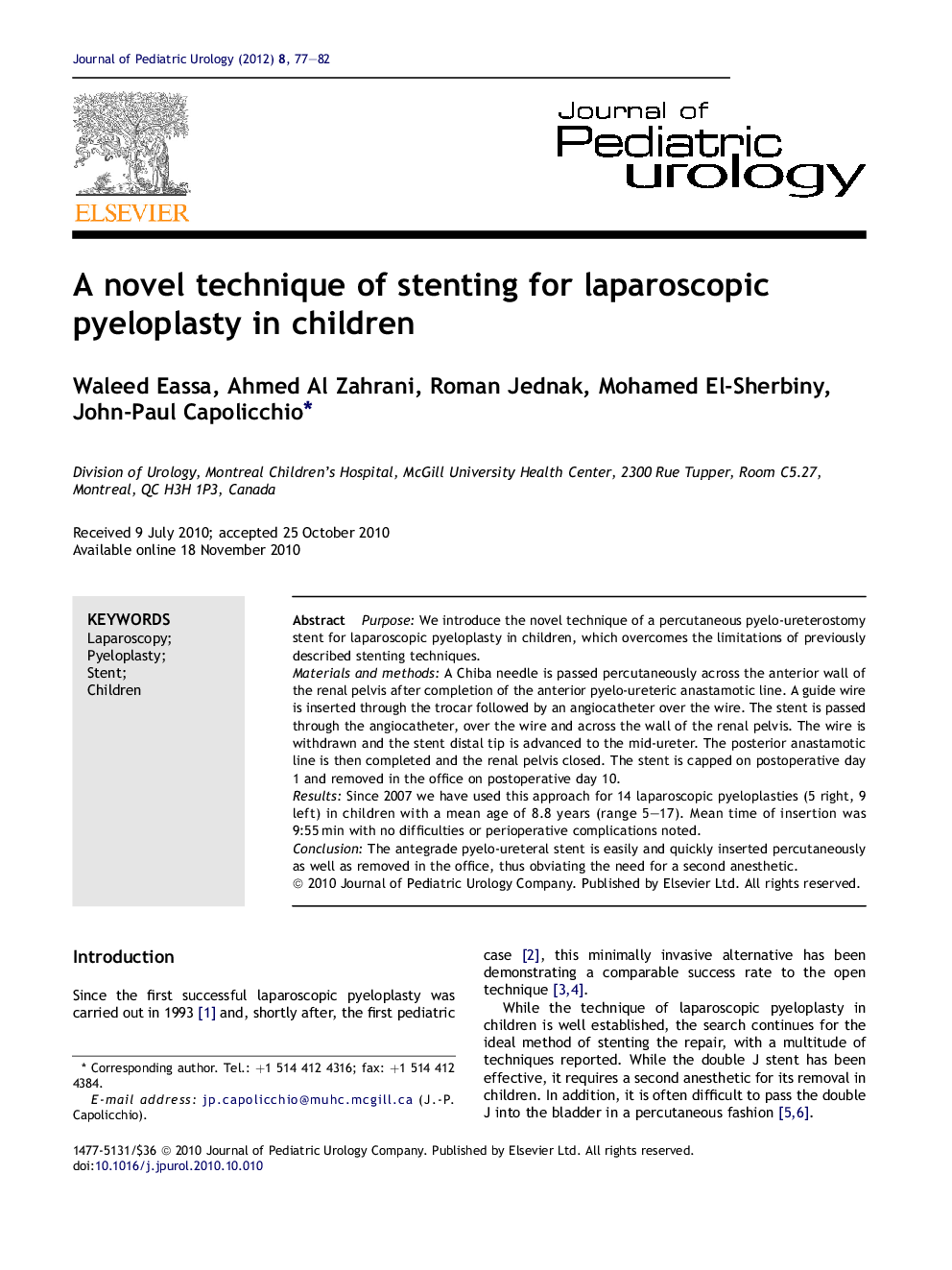| Article ID | Journal | Published Year | Pages | File Type |
|---|---|---|---|---|
| 4162893 | Journal of Pediatric Urology | 2012 | 6 Pages |
PurposeWe introduce the novel technique of a percutaneous pyelo-ureterostomy stent for laparoscopic pyeloplasty in children, which overcomes the limitations of previously described stenting techniques.Materials and methodsA Chiba needle is passed percutaneously across the anterior wall of the renal pelvis after completion of the anterior pyelo-ureteric anastamotic line. A guide wire is inserted through the trocar followed by an angiocatheter over the wire. The stent is passed through the angiocatheter, over the wire and across the wall of the renal pelvis. The wire is withdrawn and the stent distal tip is advanced to the mid-ureter. The posterior anastamotic line is then completed and the renal pelvis closed. The stent is capped on postoperative day 1 and removed in the office on postoperative day 10.ResultsSince 2007 we have used this approach for 14 laparoscopic pyeloplasties (5 right, 9 left) in children with a mean age of 8.8 years (range 5–17). Mean time of insertion was 9:55 min with no difficulties or perioperative complications noted.ConclusionThe antegrade pyelo-ureteral stent is easily and quickly inserted percutaneously as well as removed in the office, thus obviating the need for a second anesthetic.
